 |
|
| plants text index | photo index |
| mangroves |
| Mangrove
ant-house plant Dischidia major Family Apocynaceae updated Oct 2016 Where seen? This odd plant with bulbous leaves is sometimes seen in our mangroves, growing on trees and shrubs. According to Hsuan Keng, it was common on trees all over Singapore especially near the sea. According to Corners, the Subfamily Asclepiadoideae has "exceedingly complicated flowers, more so than even that of orchids and the family is considered on of the most highly evolved among flowering plants". You wouldn't quite think that looking at this rather stringy plant. Features: An epiphyte that grows on trees and shrubs. There are two kinds of leaves, arranged opposite one another. Small circular flat thick leaves (2-2.5cm) and larger hollow leaves (7-12cm long) that are oval. The large leaves are yellowish green on the outside and purple on the inside. These hollow leaves have an entrance at the base for ants and aerial roots. Ants actually take up residence inside the large hollow leaves. The ants get a safe place to stay, while the plant benefits from the minerals found in the ants' left-overs and wastes. Roots grow inside the large hollow leaf to absorb these nutrients. Flowers are small (1cm) and sunbirds appear to be attracted to them. The fruit is bean-shaped (5cm) that split when ripe to release tiny seeds attached to silky hairs. The seeds are often dragged away by ants, which feed on fat particles produced by the plant. When the plant is injured, a white sap is produced. There are other several other species of Dischia in Singapore. Status and threats: Many of our Dischia species are listed as 'Nationally Extinct' or 'Critically Endangered' on the Red List of threatened plants of Singapore. |
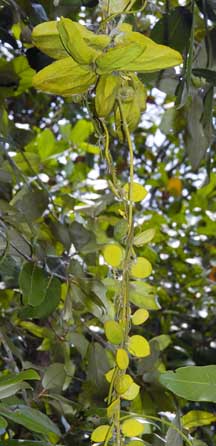 Chek Jawa, May 04 |
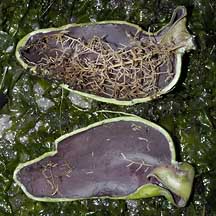 Roots grow nside the hollow leaf. Chek Jawa, Sep 03 |
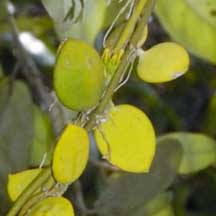 Small circular fat leaves. Chek Jawa, May 04 |
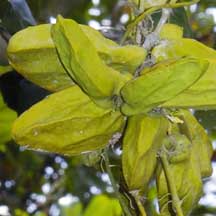 Large hollow leaves. Chek Jawa, May 04 |
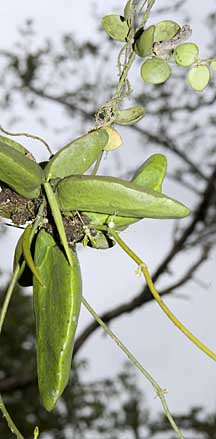 Mandai, Mar 11 |
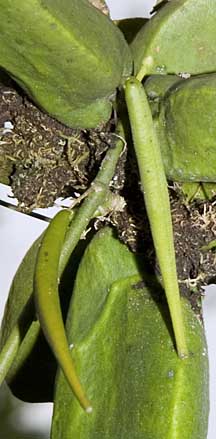 Fruit pods. Mandai, Mar 11 |
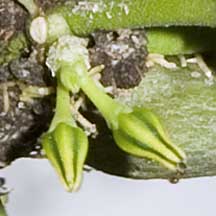 Flower bud. Mandai, Mar 11 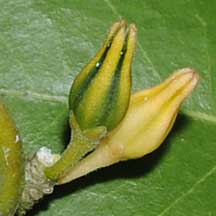 Chek Jawa, Sep 09 |
| Mangrove ant-house plants on Singapore shores |
| Photos of Mangrove ant-house plants for free download from wildsingapore flickr |
| Distribution in Singapore on this wildsingapore flickr map |
|
Links
References
|
|
|